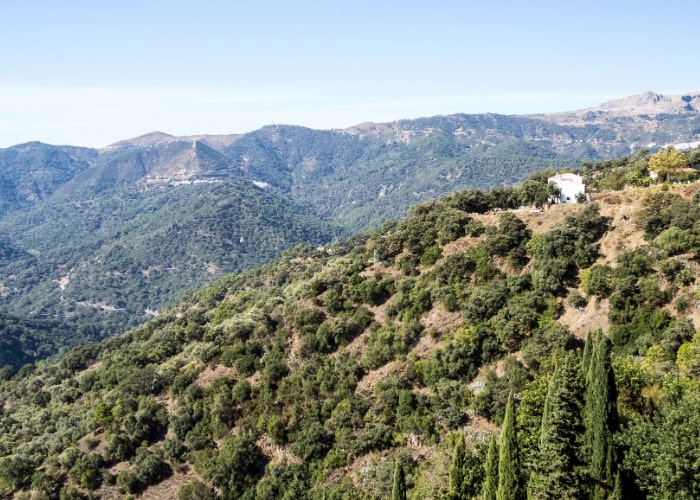BARCELONA – After three extremely dry years, the forests in Catalonia have reached the limit of their adaptability. Dry trees dominate the landscape along the coast.
It is a sad sight, the dead trees that mark the landscape. Due to the persistent drought, the forests in the Catalan mountains along the coast are starting to collapse en masse. Now that the reservoirs have reached the lowest point of their capacity (16 percent), superlatives to describe the drought in Catalonia are running out: ‘historic’, ‘catastrophic’, ‘dramatic’… The resilience of the forests also seems to be running out.
Also read: Forests in Galicia worth 43 billion euros
While the Catalan government, the Generalitat, is busy preparing an emergency plan to limit water use in the region, it seems too late for many trees. Especially in the mountain ranges along the coast and on the hills inland, the trees are literally falling in droves due to the lack of water and the extreme heat.
Landscape change
In the Parque de la Serralada Litoral, one of Barcelona’s most important forest areas, at first only the conifers turned brown. Hundreds of oaks and holm oaks are now dying in the area.
This part of the coast is densely populated. It is clearly visible in the landscape, which has changed drastically in recent decades. Normally the area should consist of cork and holm oak forests, in combination with oak forests in the shaded areas along the river.
However, in much of the region, native forests have been replaced by monocultures, such as fast-growing conifers. Although these trees adapt easily when there is little rainfall, the challenge now appears to be insurmountable.
Pests in the forest
After years of drought and water stress, the forests on the mountain ranges along the coast of Catalonia are withering. The ‘tree cemetery’ will only get bigger in the coming months. Even if it rains heavily, the consequences of the drought will continue.
In central Catalonia, the situation is even more serious. According to the Generalitat, the forest area affected by the drought has increased from 12 percent in 2022 to 80 percent in 2023. This risks spreading forest pests to other forest areas, such as the Ebro region and the Prepyrenees.
More and more forests are affected
Experts from Creaf, a center for ecological research and forestry, have been warning for years about the health of Catalan forests due to climate change. The drought will affect more and more forests. And it is the pine forests that are hit the hardest.
Het Creaf indicates that oaks, holm oaks and cork oaks, among others, suffer much more from drought than coniferous tree species such as pine, spruce and yew. However, once the treetops of conifers turn brown, the trees can be considered dead. Even if it starts raining again. Holm oaks and oaks can sprout again after a period of drought.
Three-quarters of Catalan forests are privately owned and today more than half consist of conifers. That makes it painfully clear how serious the situation is.
A neglected sector
At present, the Generalitat mainly focuses on financing forest management, in particular the felling of dead trees. The government wants to prevent the spread of forest pests on the one hand and limit the risk of forest fires on the other. Catalan forests are among the most endangered in the world. The consequences of climate change lead to major losses for many forest owners. Not only do they lose their forests, but they also have to incur high costs to guarantee maintenance.
Emergency plan needed for forests
“If we had been a bank, they would have saved us a long time ago,” says Joan, owner of one of the largest cork forests in Emporda. He emphasizes the importance of forest ecosystems. The benefits of healthy forests are numerous. This way they can absorb CO2, ensure biodiversity and good soil structure and also guarantee a good water cycle.
The lack of rain poses a huge threat to the forest areas. That is why there should also be an emergency plan for the forestry sector. Support is needed in the field of science and awareness, as well as serious and efficient policies. This requires money, a budget that is in line with the fact that 65 percent of Catalan territory is forested. Forests largely determine the landscape and health of Catalonia.
Also read: The most beautiful Spanish forests for a winter walk


